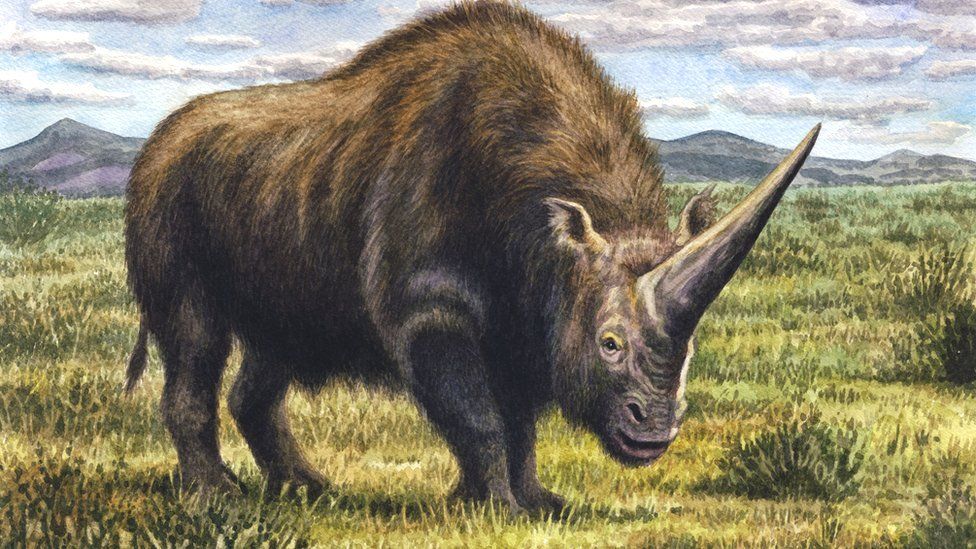'Siberian unicorn' walked Earth with humans
- Published

A giant rhino that may have been the origin of the unicorn myth survived until at least 39,000 years ago - much longer than previously thought.
Known as the Siberian unicorn, the animal had a long horn on its nose, and roamed the grasslands of Eurasia.
New evidence shows the hefty beast may have eventually died out because it was such a picky eater.
Scientists say knowing more about the animal's extinction could help save the remaining rhinos on the planet.
Rhinos are in particular danger of extinction because they are very picky about their habitat, said Prof Adrian Lister of the Natural History Museum, London, who led the study.
"Any change in their environment is a danger for them," he told BBC News. "And, of course, what we've also learned from the fossil record is that once a species is gone, that's it, it's gone for good."
Weighing in at a mighty four tonnes, with an extraordinary single horn on its head, the "Siberian unicorn", shared the earth with early modern humans up until at least 39,000 years ago.
What do we know about the ancient rhino?
The rhino, Elasmotherium sibericum, was thought to have become extinct between 200,000 and 100,000 years ago.
By radiocarbon-dating a total of 23 specimens, researchers found the Ice Age giant in fact survived in Eastern Europe and Central Asia until at least 39,000 years ago.
They also isolated DNA from the ancient rhino for the first time, showing it split from the modern group of rhinos about 40 million years ago.
The extinction of the Siberian unicorn marks the end point of an entire group of rhinos.
Why might it have gone extinct?
The study also involved examining the animals' teeth, confirming they grazed on tough, dry grasses.
"It was walking along like a kind of prehistoric lawnmower really...it's just grazing along the ground," said Prof Lister.
The rhino's specialised diet may have been its downfall. As the Earth warmed up and started to emerge from the Ice Age around 40,000 years ago, grasslands started to shrink, likely pushing the animal to extinction.
Hundreds of large mammal species disappeared after the last Ice Age, due to climate change, loss of vegetation and human hunting.
What does it tell us about the fate of modern rhinos?
Today there are just five remaining species of rhino. Very few survive outside national parks and reserves due to persistent poaching and habitat loss over many decades.
By studying fossilised rhinos, scientists can learn more about the fate of the many prehistoric rhino species that once roamed the planet and how they adapted to climate change and human pressures.
Where do unicorn myths come from?
Legends of the unicorn, or a beast with a single horn, have been around for millennia.
Some have argued that the horn of the rhino may have been the basis of myths about unicorns, although other animals - such as the tusked narwhal - are more likely contenders.
Follow Helen on Twitter.
- Published15 December 2017